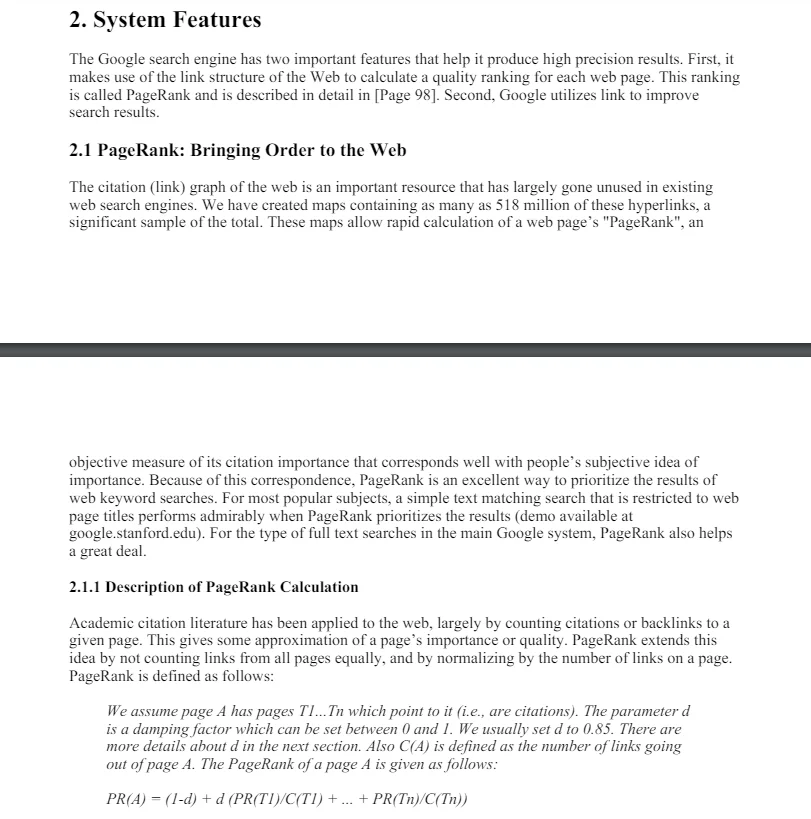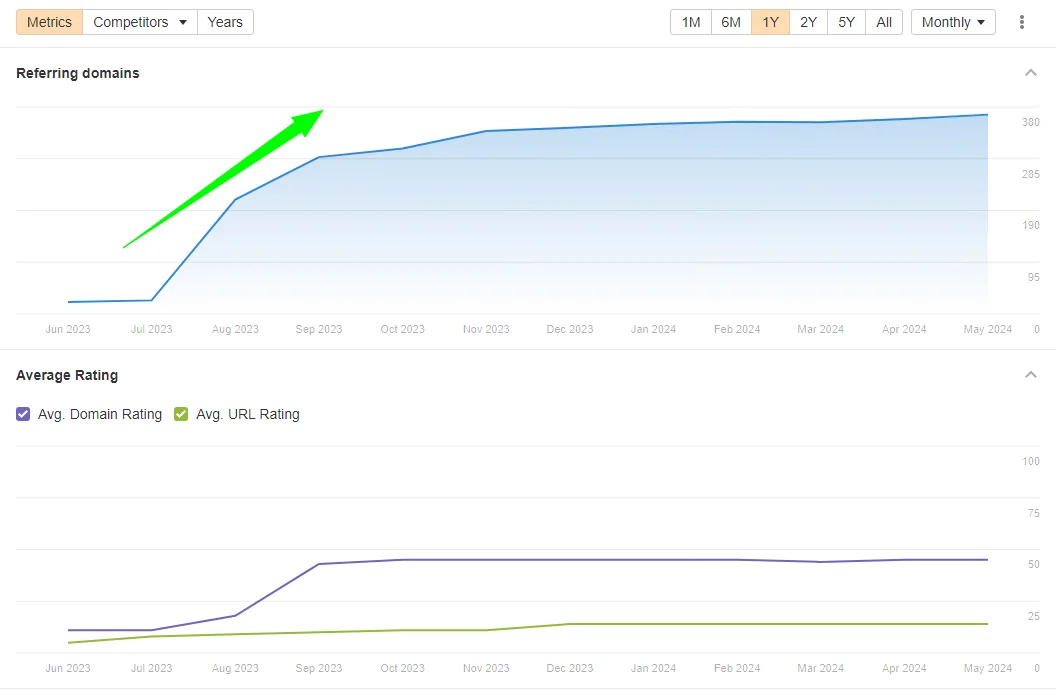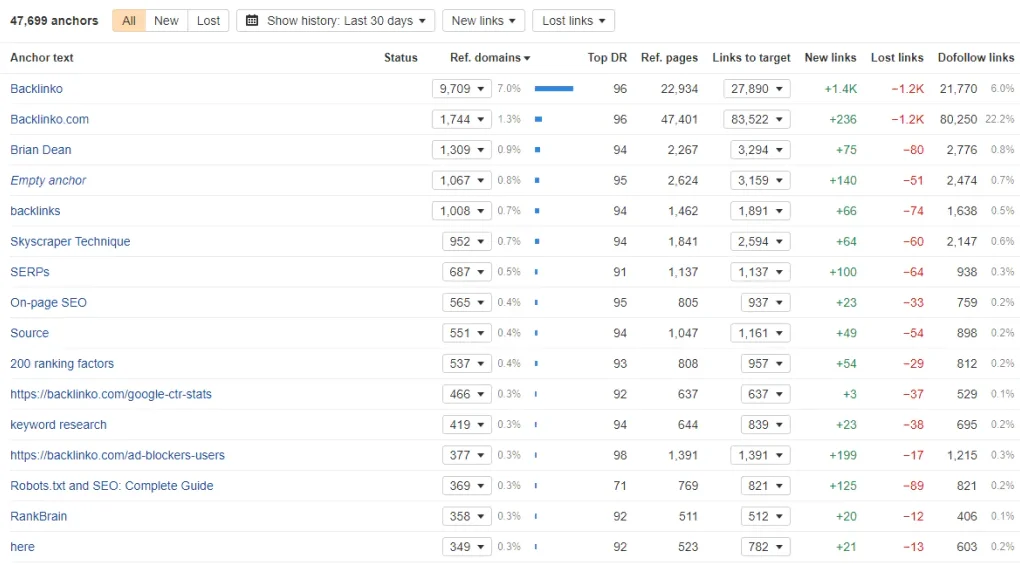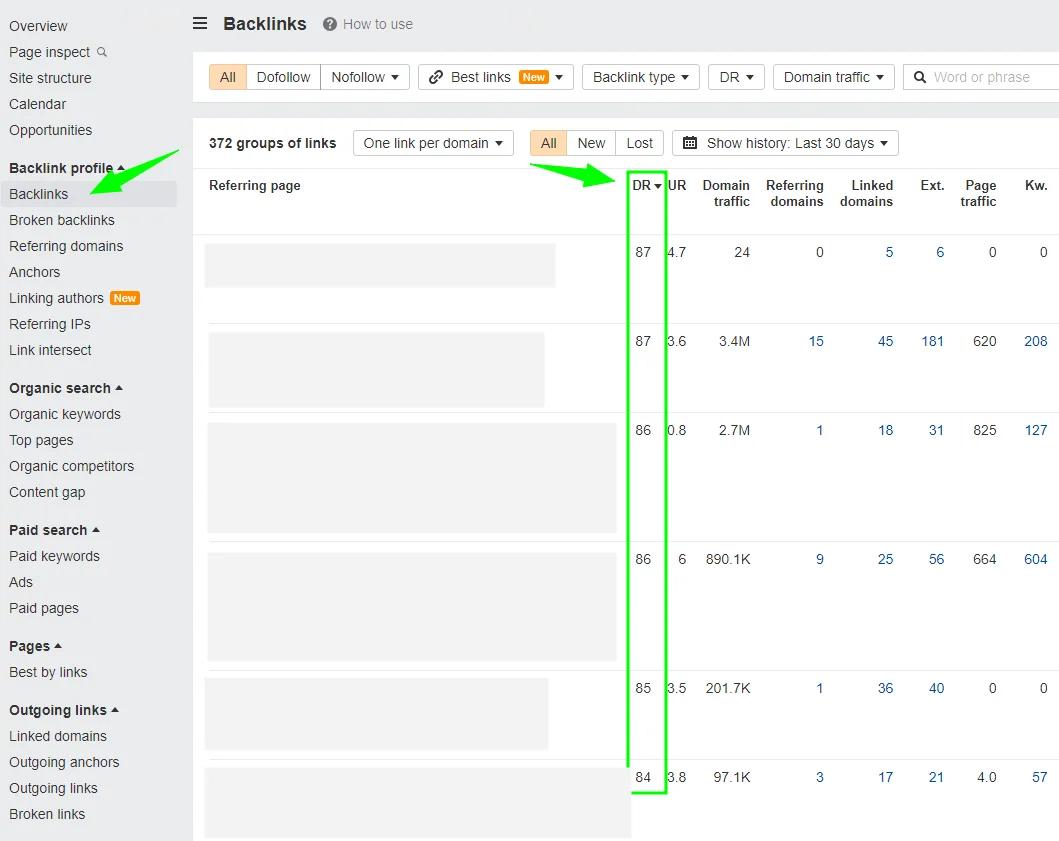
A strong link profile is a key component of promoting a website in search engines.
In 1998, Google first recognized the importance of backlinks in website promotion. That year, Sergey Brin and Larry Page published a scientific paper titled "The Anatomy of a Large-Scale Hypertextual Web Search Engine". The paper described the PageRank technology, which used backlinks as one of the main factors for evaluating the importance and relevance of web pages.

From that moment on, SEO specialists worldwide began actively placing backlinks without considering the quality of donors, context, or nativeness.
However, by 2003, the search engine introduced an algorithm called the "Florida Update", aimed at combating "black hat SEO" methods, such as spammy links and other techniques manipulating search results.
After the update, a real brainstorming session began. Specialists devised various mechanisms for obtaining links and, through "trial and error," determined the main rules for placing links to maximize the effectiveness of promoting a web resource in Google's search results.
In this article, I will discuss what constitutes a strong link profile for a website and how to build one in 2024 to reach the top positions in Google's search results for key queries.
What is a Website's Link Profile
A link profile is the aggregate of all external backlinks that lead to a website from external sources (donors). It includes various characteristics, in particular:
-
Total number of backlinks that lead to the site.
-
Sources: Diversity and quality of the referring donors.
-
Anchor text list: Words and phrases into which hyperlinks are embedded. There are anchored and non-anchored links (commercial and non-commercial).
-
Anchored links contain target queries that are desired for resource promotion.
-
Non-anchored links include plain URLs, brand names, and phrases such as "here", "in the article", "source", "more details", etc.
-
Commercial anchors are keywords/phrases combined with "buy", "order", etc.
-
Read more about anchored and unanchored links in this article.
-
Types of links: Dofollow, nofollow, redirect, and others. The proportions of different types of links can indicate the naturalness of the link profile. We also have a detailed article on dofollow and nofollow links on our blog.
-
Placement: Location where the links are found (in the text of an article, in the sidebar, footer, etc.).
-
Context: Relevance of the content on the pages where the links are placed to the topic of the site they lead to.
-
Link acquisition dynamics: How quickly a web resource gains new links and maintains them over time. Gradual increase in the number of links appears organic to search engines.
A link profile is an important factor in SEO, as the quality and naturalness of links can significantly influence a website's ranking in search engines. An unnatural or spammy profile can lead to penalties, such as Google Penguin.
Read also: Promotion with eternal and temporary links
Key Parameters of a Strong Link Profile
What parameters define a link profile as strong? When analyzing it with the best tool, Ahrefs, we look at the following indicators:
-
Site Trust: This concept is relative, but most SEO specialists focus on it. In Ahrefs, we look at the DR (Domain Rating) metric. Strong domains typically have a DR above 20.

-
Link Profile Dynamics: The link mass should grow gradually without sudden drops. If a profile suddenly gains many links and then loses them a few days later, this is called a "link explosion". Such events draw the attention of Google and can lead to penalties from the search engine.

-
Safe Anchor List: A safe anchor list will predominantly feature non-anchored links because they appear organic. Commercial anchors should be used judiciously and should be in the minority.
The idea is to make your link profile look natural. Typically, users exchanging links among themselves do not bother embedding them in anchor text but leave them as URLs. Similarly, external platforms, whether social networks or media outlets, that decide to share a web address on their own are more likely to use a simple non-anchored link rather than think about a keyword.

-
Variety of Link Type: Previously, SEO specialists aimed to place only dofollow links, as it was believed that only they passed on value, influencing the trust of the site and its positions in search results.
However, times have changed. Since 2019, Google has started considering nofollow links as well. Therefore, to make a link profile appear organic, you need to have backlinks of different types. But keep an eye on the quality of dofollow links, as they still have a stronger impact on ranking.

-
Quality of Donors: The more weight the donors of backlinks in the site's profile have, the better positions can be achieved in promotion. Here are example parameters for selecting a donor:
-
DR (Domain Rating) of 20 or higher;
-
Traffic of at least 10,000 users per month;
-
Relevant target audience geography. Do not focus on the first region on the list. Always compare the percentage of a specific region to the overall site traffic;
-
Relevant theme at the page level;
-
Trust Flow of 10 or higher according to Majestic.
-

-
Context: Pay attention to the quality of the content on the page where the link is placed. The main factors are thematic relevance and usefulness to the reader. Also, check the page for spammy links.
-
Variety of Link Acquisition Mechanics: Do not rely on just one or two link-building methods when promoting a site. Start with the basics, then experiment and track effectiveness.
Now, let's delve into the link acquisition mechanics that truly work and strengthen a site's link profile.
Effective Link-Building Techniques
Currently, there are at least 60 link-building techniques. Despite this, a few are known to work effectively and improve a site's ranking in search results.
Submissions
Submissions are platforms that allow you to independently add information about your business, including its website, contact details, services, location, etc. Submissions cover the following types of platforms:
-
Local directories;
-
Social networks;
-
Job search platforms;
-
Video hosting sites;
-
Podcast sites;
-
Freelance platforms;
-
Aggregators;
-
PDF catalogs;
-
Website analyzers;
-
Document/presentation sharing services;
-
Self-publishing blogs;
-
And similar platforms.
First and foremost, you should add your web resource to the Google My Business directory. This will help the search engine better understand the nature of your business and the geography of its audience.
Basic Rules for Working with Submissions:
-
Check the SEO metrics of the platform;
-
Completely fill out the profile: from descriptions and links to your site/social media/messengers to photos/banners/videos;
-
Review the company's pages for customer reviews.
Crowd Marketing
Crowd marketing involves posting recommendation comments on forums, Q&A sites, and blog articles.
Basic Rules for Working with Crowd Marketing:
-
When choosing platforms, check the SEO metrics and focus on the page's topic rather than the entire site's theme;
-
Fully complete your profile;
-
Before posting a targeted comment with an active link, wait at least 2 weeks from the time of registration and write 20+ neutral comments on different topics.
For more information, watch the video by Referr COO Alina Chumak on the Referr YouTube channel:
Guest Articles
Guest articles are a link-building technique that involves creating and publishing thematic articles with active links to the target site on external platforms. Like the one you are reading.
Basic Rules for Working with Guest Articles:
-
Choose the Right Topic: The topic should be interesting to the platform's audience and match the key queries of the target site.
-
Use Simple Writing Style: Avoid filler content and technical jargon without explanations.
-
Create a Thesis Plan: Before writing the article, outline a thesis plan to structure the material and gradually develop the topic.
-
Write from a Personal Perspective: Do not publish the article on behalf of a team or company; promote yourself as the author and expert.
-
Format the Text Properly: Break the text into small paragraphs and use lists for easier readability.
-
Add Visuals and Links: Include screenshots, videos, and links to useful sources.
Guest articles can be published through outreach (personal conversations with the site owner/representative) or through specialized link exchange platforms, such as the Ukrainian Collaborator.
Link Insertion
Link insertion involves placing a link on a page that already exists, has traffic, link weight, and ranks in Google for relevant keywords.
Basic Rules for Working with Link Insertion:
-
Compile a List of Keywords: Identify the keywords for which you want to improve your Google ranking and select the corresponding pages of your website.
-
Review the Top Results: Look at the top results for these keywords and identify pages where you can place a link to your site.
-
Contact the Owners/Representatives: Reach out to the owners/representatives of these pages and inquire about the possibility of link insertion and the terms.
-
Fulfill the Conditions: Meet the conditions, wait for the placement, and assess the effectiveness.
Link insertion provides quick results without significant effort. All you need to do is find pages and arrange for link placement, without creating or distributing content.
How to Prepare a Website for Link Building
To prepare your site for link building, follow these steps:
-
Check for SEO Errors: Ensure your site is well-optimized and free from SEO errors. Use checklists or tools like Sitechecker for this.
-
Create an Adaptive Version: If you don't have one, create or ensure the adaptability of a mobile version of your site, as this significantly impacts ranking.
-
Internal Linking: Ensure good internal linking, especially for commercial pages.
-
Compile a Keyword List: Create a comprehensive list of target keywords and select pages for promotion. Regularly update this list.
-
Update Your Blog: Your blog will play a key role in link exchange through guest posts and link insertion. Keep it updated.
-
Analyze Competitors: Analyze your direct competitors to determine which strategies work best in your niche, find donors, and create content themes. This analysis will also help you identify what your site lacks and estimate the initial number of links needed for promotion.
-
Ensure Good Usability: Check for good usability and add author bios with links to their social media profiles. Google's recent updates emphasize this.
After completing these steps, you can start creating a strategy and placing links.
Main Changes in Google Algorithms Affecting the Site's Link Profile
A brief overview of key changes in Google algorithms to understand how to adapt your link profile building strategy for better results.
-
Google Penguin
-
Impact: Penalty for spammy links
-
What to do: Extract organic backlinks from trusted donors and monitor the dynamics of the link profile.
-
-
Google BERT
-
Impact: Better understanding of content context
-
What to do: Optimize content to match target queries.
-
-
Core Algorithm Updates
-
Impact: Evaluation of site authority and relevance
-
What to do: Regularly analyze the link profile, improve content quality.
-
-
E-A-T (Expertise, Authoritativeness, Trustworthiness)
-
Impact: Increase in the value of expertise, authority, and trustworthiness
-
What to do: Attract links from authoritative and reliable sources, enhance content authors, monitor its usefulness for readers.
-
-
Mobile Indexing (Mobile-First Indexing)
-
Impact: Importance of the mobile version for site ranking
-
What to do: Optimize the mobile version while maintaining quality.
-
-
Artificial Intelligence
-
Impact: Improvement of link quality analysis using AI
-
What to do: Create content that meets user intent.
-
Keep an eye on Google updates to timely adapt your site and link building strategy to the new requirements.
Read also: Google updates in March 2024 – the search engine rolls out a global update
Conclusion
In 2024, building a strong link profile for a website is an important component of successful business promotion on Google.
To achieve these goals, consider several key aspects. Firstly, the quality of links should always prevail over quantity. Placement on authoritative platforms is crucial.
Secondly, it is important to use diverse link building techniques and create truly interesting and useful content that will encourage users to share links to your site.
Thirdly, it is important to consider Google updates and adapt the promotion strategy of the web project accordingly.
In general, successful building of a strong link profile requires constant improvement and adaptation to the new requirements of search engines.










